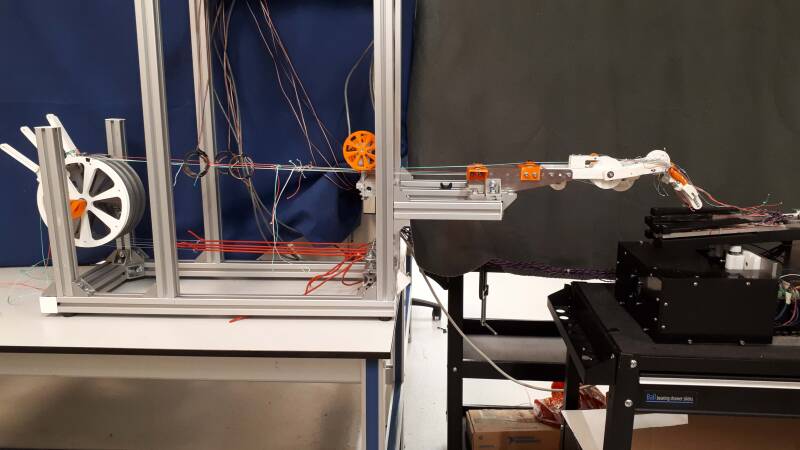
J.N.A.L. Leijnse
A brief personal history in musical hand biomechanics
First-hand experience
As a violin student at the Brussels Royal Conservatory of Music, Belgium, J.N.A.L. Leijnse developed control problems in the left hand (focal hand dystonia). He switched to graphic plastic arts [1], where fine-coordination problems developed in the right hand in drawing. In auto-didactic studies of human anatomy for figure drawing, Leijnse learned the existence of anatomical variations in the musculoskeletal system of the hand that limit finger independence. He teamed up with a hand surgeon (J. Bonte, MD) to surgically modify these limitations. In the meantime, Leijnse was forced to give up graphic studies due to the hand problems and, after a preparatory year in mathematics, studied engineering in technical mathematics at the KU Louvain. There he developed writing problems, complicating these studies. Ultimately, in both hands, all these problems were solved by surgical modifications of anatomical variations in the musculoskeletal system of the hand. In the process, Leijnse conducted the supporting scientific biomechanical and anatomical research at the Anatomy departments of KU Louvain and VU Brussels, as a student-researcher sponsored by the hand surgeon.
Research and hand clinic for musicians
Based on this self-taught knowledge and personal treatment successes, Leijnse became a researcher in this subject at the Erasmus University Rotterdam (departments of Biomedical Technology and Plastic, Reconstructive and Hand Surgery), earning a cum laude doctoral degree in 1995, with the thesis 'Finger exercises with anatomical constraints - a methodological analysis of non-pathological anatomical variations as causes of hand problems in musicians'. Meanwhile, at the dept. of Plastic Surgery, the plastic and hand surgeon G. J. Sonneveld, MD, had started a hand clinic for musicians with a special focus on anatomical variations in musicians with instrument-technical playing problems, hand overload complaints and hand dystonia, based on Leijnse’s research. Between 1993-2000, a clinical trial of surgical hand anatomical modifications in such hand complaints was conducted.
Hand biomechanics research laboratory
Leijnse subsequently became founder and director of a Hand Biomechanics Research Laboratory at the renowned Kleinert Institute for Hand and Microsurgery in Louisville, Kentucky, USA. This laboratory was later moved to the departments of Mechanical Engineering and Surgery at the University of Louisville, where Leijnse became assistant professor of research. After returning to Europe (2010), he established a Hand Biomechanics Lab at the Engineering School of the UL Bruxelles, Brussels, Belgium. This laboratory was continued at the Department of Anatomy of Ghent University (2016 - 2021) as visiting professor. Since 2021, Leijnse is a guest docent in hand biomechanics at the Delft University of Technology, the Netherlands.
Legacy
Leijnse's research work laid the anatomical and biomechanical foundations for understanding the effects of anatomical variations on hand function in instrumental playing. In the Netherlands this was put into practice by Plastic and Hand Surgeon G.J. Sonneveld. In the USA, Leijnse collaborated with neurologist Mark Hallett, MD (NINDS, NIH) in publishing a model on peripheral hand factors as cofactors in focal hand dystonia in musicians (2015) [2]. This model motivates the relevance of the biomechanical analyses at the Hand Biomechanics Center for Musicians. Currently, Leijnse is preparing, apart from research on musicians, a book on the functional morphology and reconstructive biomechanics of the human finger.
[1] Prints: First woodcut (top) and etching (right) at art school.
[2] Leijnse J.N.A.L., Hallett, M., Sonneveld, G.J. (2015) A multi-factorial conceptual model of peripheral neuro-musculo-skeletal predisposing factors in musician’s task-specific hand dystonia - etiologic and therapeutic implications. Biological Cybernetics, 109(1):109-23. doi: 10.1007/s00422-014-0631-5. Epub 2014 Oct 17.





